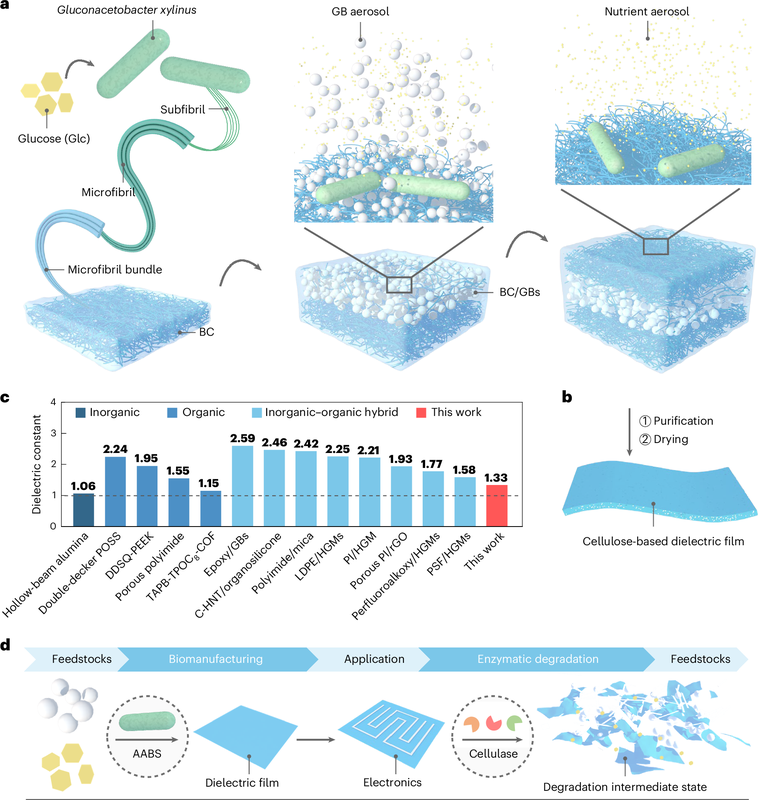Closed-Loop System Examples
List by Adeline Swires
As we can see from the previous page of this lesson, there are a number of conventional methods of waste treatment which depend on the system scale and type of waste. However, not all of them fit in the sustainability picture. For example, such common methods as incineration or landfilling are not sustainable solutions because, while eliminating problem in one zone (for example, human residence or industrial facility), they create additional pollution in the other (atmosphere, soil, aquifers, natural habitat). The purpose of recycling is to minimize or completely avoid sending waste to landfill or incinerator.
The growing consumption of electronics is leading to the rapid accumulation of electronic waste, which has been a global concern for years. This work presents a closed-loop bio-recyclable cellulose-based dielectric film that can improve the circularity of electronics and could reduce electronic waste.
ResearchGate: An Introduction to Closed-Loop Concept in Industrial Ecology
Linear transformation vs. closed-loop system thinking. Industrial Ecology can help achieve this development. This chapter explores the basic concepts in relation to IE, including biological ecosystem, industrial ecosystem, sub-ecosystems and their interactions with the ecosystem of the Earth. IE considers the development of high-level closed-loop industrial ecosystems as its ultimate goal through mimicking key principles of biological ecosystems. An industrial ecosystem needs to work towards high-level closed-loop material exchanges and high efficiency of energy cascading.
https://www.researchgate.net/publication/321476134_An_Introduction_to_Closed-Loop_Concept_in_Industrial_Ecology
Objective: To define critical material and information pathways to support the development of closed-loop systems to establish reliable sources of secondary material feedstocks that divert critical resources away from landfills using material recovery strategies - recycling, remanufacturing, and reuse
Closed-loop production systems strive for sustainability by improving economic and environmental goals simultaneously. We note that many negative envi…




